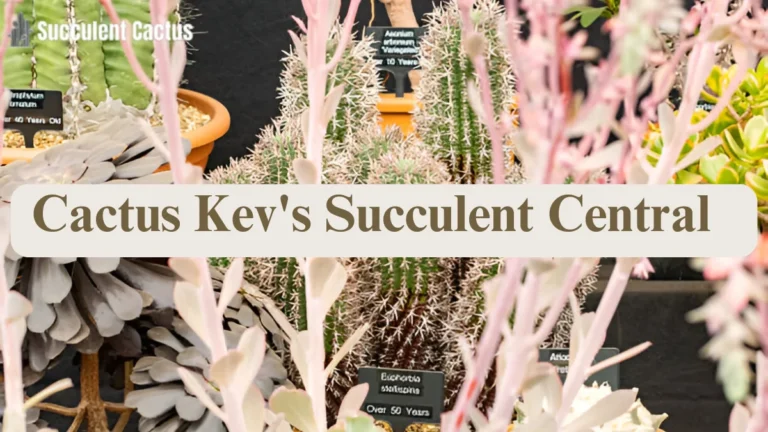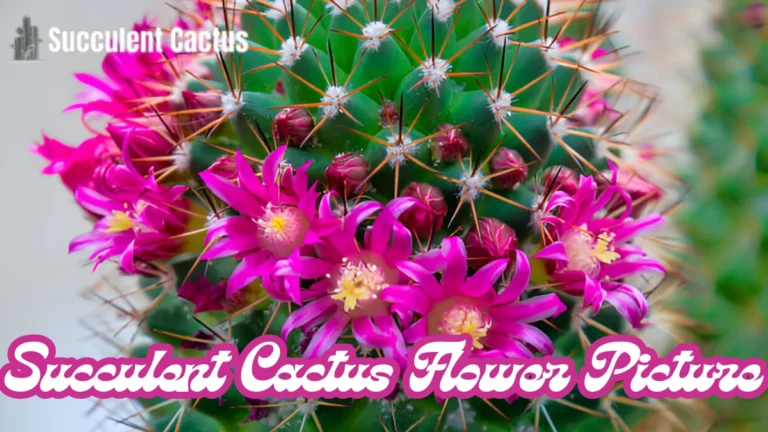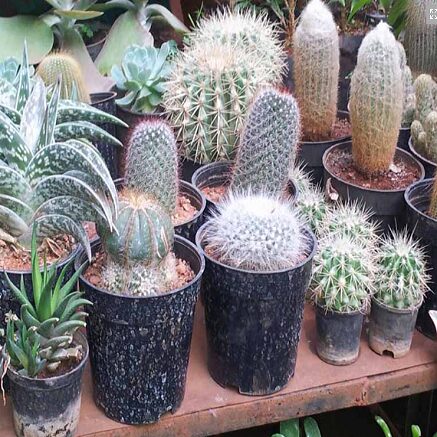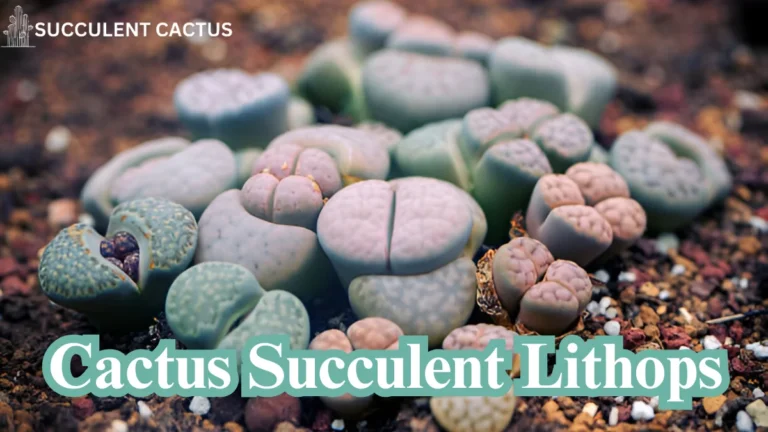Cactus & Succulent Roots: A Complete Guide to Growth and Care

Succulent plants and cacti thrive in harsh environments thanks to their highly specialized root systems. Whether you’re a seasoned succulent enthusiast or a beginner, understanding cactus succulent root structures and succulent plant roots is essential for healthy growth.
In this in-depth guide, we’ll explore everything from the types of roots succulents have to proper care, troubleshooting, and propagation.
Understanding Cactus Succulent Root Systems
How Cactus and Succulent Plant Roots Differ from Other Plants
Unlike most plants, succulents have roots specifically adapted for water conservation. These roots:
- Absorb and store water quickly during rainfall.
- Prevent excess moisture absorption to avoid rot.
- Spread widely instead of growing deeply to capture surface moisture.
Cactus and succulent roots vary in function depending on the species and habitat. Some store water, while others anchor the plant in rocky or sandy soil.
Types of Succulent Plant Roots
Succulent and cactus plants have different root structures based on their environmental needs. The three main types include:
| Root Type | Function | Example Plants |
| Fibrous Roots | Spread close to the surface to absorb rainfall quickly | Aloe, Haworthia |
| Taproots | Grow deep to access underground water sources | Agave, Pachypodium |
| Tuberous Roots | Store water and nutrients for survival in droughts | Adenium, Caudex-forming succulents |
Each root type plays a crucial role in keeping the plant hydrated and stable.
How Succulents Absorb and Store Water
Succulents and cacti have evolved to maximize water efficiency. They use:
- Rapid absorption: Their roots take in as much moisture as possible during rare rainfall.
- Water-storing cells: Some roots have specialized cells that hold moisture for extended periods.
- Protective coatings: Waxy coatings and underground positioning minimize evaporation.
This ability allows succulents to survive extreme droughts.
Propagating Succulent Plants Through Roots
Root Propagation vs. Leaf and Stem Propagation
Succulent propagation is usually done through cuttings, but root-based propagation has unique benefits:
| Propagation Method | Advantages | Common Succulents |
| Root Division | Faster growth, less stress | Aloe, Haworthia |
| Leaf Cuttings | Works for many species | Echeveria, Sedum |
| Stem Cuttings | Quick establishment | Jade Plant, Cactus Pads |
Root division is ideal for succulents with extensive root systems.
Steps for Propagating Succulents from Roots
- Gently remove the plant from the soil. Shake off excess dirt to expose the root system.
- Identify healthy root clusters. Look for sections that can be divided without damaging the plant.
- Use a clean, sharp knife to separate the roots into smaller sections.
- Allow cut roots to dry for 1-2 days to prevent rot.
- Replant in dry, well-draining soil and water lightly after a few days.
This method works well for Aloe, Haworthia, and other clumping succulents.
Best Conditions for Root Development in Succulents
For successful propagation, ensure:
- Warm temperatures (65-75°F or 18-24°C).
- Bright but indirect light to encourage growth.
- Proper watering schedules (only when soil is dry).
Following these conditions will help succulents establish strong root systems.
Root Rot in Succulent Plants and Cacti
Common Causes of Root Rot
Root rot is one of the biggest threats to succulent health. The main causes include:
- Overwatering: Excess moisture suffocates the roots, leading to decay.
- Poor drainage: Soil that retains water prevents oxygen flow.
- Fungal infections: Rot can spread if the plant is not treated quickly.
Preventing root rot starts with proper watering and soil conditions.
How to Identify Root Rot in Succulents
Signs of root rot include:
- Soft, mushy roots that appear brown or black.
- Wilting or yellowing leaves, even with proper care.
- A foul odor coming from the soil.
If root rot is detected, immediate action is required to save the plant.
Treating and Preventing Root Rot
Steps to treat root rot:
- Remove the plant from soil and cut off all infected roots.
- Let the plant dry for 24-48 hours.
- Repot in fresh, dry soil with better drainage.
- Use a fungicide if needed to prevent further infection.
Prevention is key—water only when necessary and ensure soil drains well.
The Role of Soil and Drainage in Healthy Roots
Choosing the Right Soil for Succulents and Cacti
The best soil mix for succulent roots should:
- Be fast-draining to prevent rot.
- Contain gritty materials like sand, pumice, or perlite.
- Be nutrient-rich to support growth.
A good mix includes 50% cactus soil and 50% inorganic material for aeration.
The Importance of Drainage Holes in Pots
Drainage holes prevent:
- Water buildup that leads to rot.
- Fungal infections caused by excess moisture.
- Salts and minerals from accumulating in the soil.
If a pot lacks drainage holes, adding a layer of rocks or activated charcoal can help.
How to Improve Soil Aeration for Stronger Roots
Aeration keeps succulent roots healthy by:
- Allowing oxygen to reach the root system.
- Preventing soil compaction.
- Promoting nutrient absorption.
Adding perlite, pumice, or lava rock helps improve soil structure.
Root Rot in Cactus and Succulent Plants
Root rot is one of the most common problems that affect cactus succulent roots and succulent plant roots. It occurs due to overwatering, poor drainage, and fungal infections. Recognizing the symptoms and acting quickly can save your plants.
Causes of Root Rot in Cactus and Succulents
Several factors contribute to root rot, but excessive moisture is the main culprit. Succulents and cacti are drought-resistant plants, and their roots cannot tolerate prolonged exposure to water. Here are the major causes:
- Overwatering: The most common reason for root rot is too much water. Succulents need well-spaced watering schedules to prevent soggy soil.
- Poor Drainage: If the potting mix does not allow excess water to drain out, roots remain wet, leading to rot.
- Fungal Infections: Fungus thrives in damp conditions. Phytophthora and Pythium are common pathogens that attack the roots.
- Cold and Humid Conditions: During winter, succulents enter dormancy and require very little water. Watering them frequently in cold conditions encourages rot.
- Compact Soil: Dense soil holds moisture for too long, depriving roots of oxygen, which weakens them and leads to decay.
The best way to prevent root rot is to use well-draining soil, water sparingly, and ensure proper air circulation.
Symptoms of Root Rot in Cactus and Succulents
Identifying root rot early is crucial for saving your plant. Some common signs include:
- Soft, Mushy Roots: When you remove the plant from its pot, rotten roots appear dark brown or black and feel slimy.
- Yellowing or Wilting Leaves: If the roots cannot absorb nutrients due to decay, the plant’s leaves will start turning yellow and soft.
- Foul Smell: Rotting roots produce a bad odor due to bacterial decomposition.
- Black Spots at the Base: If you notice dark patches near the soil line, the rot may be spreading from the roots to the stem.
- Slow or No Growth: A succulent that stops growing despite proper care might have root issues.
If you notice any of these symptoms, immediate action is necessary to prevent further damage.
How to Treat Root Rot in Succulents and Cacti
Once root rot has set in, saving the plant requires immediate intervention. Follow these steps:
- Remove the Plant from the Soil: Gently take out the plant and inspect the roots.
- Trim Affected Roots: Use a sterilized knife or scissors to cut off all the mushy, dark roots.
- Let the Plant Dry: Place the plant in a dry, shaded area for a few days to allow the wounds to heal.
- Apply Fungicide: Treat the remaining healthy roots with a diluted fungicide to kill any lingering infections.
- Repot in Fresh, Dry Soil: Use a cactus or succulent mix with good aeration and drainage.
- Adjust Watering Practices: Water only when the soil is completely dry to prevent recurrence.
Taking these steps can help revive a succulent suffering from root rot.
How to Strengthen Succulent and Cactus Roots
Healthy roots are essential for the long-term survival of succulents and cacti. Strengthening the cactus succulent root and succulent plant roots ensures better water absorption, resistance to diseases, and overall plant stability.
Choosing the Right Soil for Strong Roots
Soil plays a significant role in root health. The ideal succulent soil should have:
- Good Drainage: A mix that allows water to pass through quickly prevents root rot.
- Aeration: Roots need oxygen to grow properly. A soil mix with perlite, pumice, or coarse sand improves airflow.
- Nutrient Retention: While drainage is essential, the soil should also retain enough nutrients to sustain growth.
A recommended soil mix includes:
| Component | Purpose |
| 50% Pumice or Perlite | Improves drainage and aeration |
| 30% Cactus Potting Mix | Provides essential nutrients |
| 20% Coarse Sand | Prevents soil compaction |
Using the right soil blend will help develop strong and resilient roots.
The Role of Watering in Root Strength
Watering habits significantly impact root strength. Here’s how to water succulents for strong roots:
- Deep Watering: Instead of frequent light watering, soak the soil thoroughly and let it dry before watering again.
- Avoid Overwatering: Allow the soil to dry out completely between waterings.
- Seasonal Adjustments: Water more in summer and reduce watering during winter dormancy.
A proper watering schedule encourages roots to grow deeper, making the plant more resilient.
Using Fertilizers to Promote Root Growth
While succulents don’t need heavy fertilization, the right nutrients can enhance root health. Consider these tips:
- Use a Balanced Fertilizer: A diluted 10-10-10 (N-P-K) fertilizer helps stimulate root development.
- Apply During the Growing Season: Feed succulents in spring and summer when they actively grow.
- Avoid Excess Nitrogen: Too much nitrogen promotes weak, leggy growth instead of strong roots.
Providing essential nutrients strengthens succulent roots and enhances overall plant health.
FAQs
1. Why are my succulent roots turning brown and mushy? This is a sign of root rot caused by overwatering or poor drainage. Remove the plant from the soil, trim rotten roots, let it dry, and repot in a well-draining mix.
2. How often should I water my succulents to maintain healthy roots? Water only when the soil is completely dry. Depending on the climate, this can range from once a week to once a month.
3. Can I propagate succulents from their roots? Yes! Some succulents can be propagated from root cuttings. Remove healthy roots, allow them to dry for a few days, and replant them in dry soil.
4. What type of pot is best for succulent roots? Terracotta pots are ideal because they allow air circulation and help absorb excess moisture, preventing root rot.
5. How do I know if my succulent roots are healthy? Healthy succulent roots appear firm and light-colored (white, pale yellow, or pink). They should not be mushy, black, or have a foul smell.
Conclusion
Understanding cactus succulent root and succulent plant roots is key to growing healthy plants. Proper soil, watering techniques, and root care prevent common problems like root rot and weak growth. By following these guidelines, you can ensure strong, thriving succulents and cacti that will beautify your home or garden for years to come.
If you found this guide helpful, share it with fellow succulent lovers! Happy planting!






